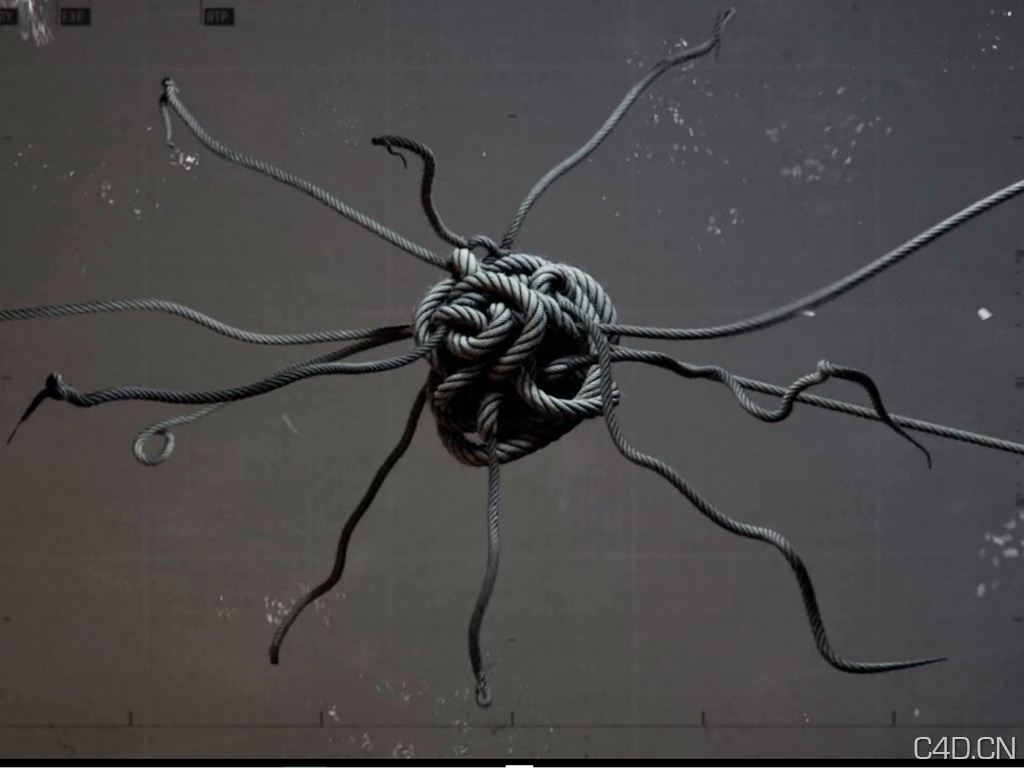




When it came time for Simon Fiedler to create a thesis work for his media design studies, he quickly found a topic: The idea itself. How are ideas created, where do they come from, how do they work, how do they feel? The approach to this topic showed that an idea is not a stringent event with a beginning, a zenith and an end but a weave of elements that influence each other and interrelate causally in a highly complex system. After several weeks, Simon felt as if he were uncontrollably lost in this maze and had only made minimal progress in the completion of his thesis work. As fascinating as the topic was, it was just as difficult to grasp, to explain and to illustrate in a film Simon’s supervising professor, Professor Ihmels, was the person who helped Simon make the deciding breakthrough: why not use images to capture the feeling of “not advancing”? To illustrate a creative block itself and make it the main topic sparked Simon's creative fire. From a mix of helplessness, panic, creative block and fear of failure he conjured up as many impressions, images and visually captivating emotional states as he possibly could. Simon then used these elements and influences to create the imagery for his thesis work.
Simon selected the nautilus shell as the symbol for the idea in his film, Droplets. The nautilus shell has a snail-like curved shape which can best be described as a spiral consisting of arcs in a set of Fibonacci rectangles, which in turn are based on Fibonacci numbers. Fibonacci numbers is a sequence of numbers in which a given value is equal to the sum of the two previous values (1, 1, 2, 3, 5, 8, 13, 21, …). The nautilus shell and the Fibonacci numbers in their original, pure form, therefore, represent the inspiration in Simon’s visual world.
Simon makes this shape undergo several morphs in the course of his film – some created by him, others caused by external catalysts. At first it looks like the process is of a purely destructive nature, which has a progressively negative effect on the shape of the nautilus and is leading to its ultimate destruction! However, the film continues on to show very impressively how the inspirational shards of one idea can become the foundation of a completely new idea.
The fact that many parts of one element can reshape to another whole element at a different level also inspired Simon in the naming of his film. Observing raindrops landing on the sidewalk in front of a café and combining to build a puddle to create a new whole inspired the name Droplets, which reflects perfectly the philosophy of the film.
Simon used Cinema 4D and After Effects to create Droplets. CINEMA 4D in particular played a major role in the production. Particle effects, hair, MoGraph, Dynamics, Mocca, XPresso and C.O.F.F.E.E. were used in the most varied ways. The particle effects helped create the fireworks explosions that look like sparkling synapses. Mocca, XPresso and C.O.F.F.E.E. were used to animate the steel cables.
Link to the film Droplets:
www.vimeo.com/22391017
Website Simon Fiedler:
www.sugarview.de
Website Daniel Mauthe:
www.danielmauthe.net
Website Ben Krahl:
www.benkrahl.com
|
|
 179个科幻元素模型合集Sci-Fi architecture Elements collection
179个科幻元素模型合集Sci-Fi architecture Elements collection 9个科幻机械发动机能量装置元素模型SCI-FI ELEMENTS
9个科幻机械发动机能量装置元素模型SCI-FI ELEMENTS 太空飞船 科幻空间站场景C4D模型 Zenith
太空飞船 科幻空间站场景C4D模型 Zenith C4D 科幻场景工程(Cycles 4D渲染)
C4D 科幻场景工程(Cycles 4D渲染) 硬面机甲C4D模型素材 Hard Surface Elements Cinema 4D Kitbash 2
硬面机甲C4D模型素材 Hard Surface Elements Cinema 4D Kitbash 2 C4D创建抽象三维设计元素教程3 Create Abstract 3D Design Elements – Shape 3
C4D创建抽象三维设计元素教程3 Create Abstract 3D Design Elements – Shape 3 C4D+AE创建蜂窝图形动画教程 Creating Complex Animated Texture with C4D and AE
C4D+AE创建蜂窝图形动画教程 Creating Complex Animated Texture with C4D and AE 211个科幻元素3d模型(.obj格式)Science fiction elements
211个科幻元素3d模型(.obj格式)Science fiction elements C4D制作HUD科技感元素 Designing and Animating Futuristic HUD Elements Tutorial
C4D制作HUD科技感元素 Designing and Animating Futuristic HUD Elements Tutorial C4D+E3D制作发光科幻球 COMPLEX Shape Cinema4D Element3D
C4D+E3D制作发光科幻球 COMPLEX Shape Cinema4D Element3D C4D+AE体育频道包装工程模板 Sports Elements Pack Vol. 01
C4D+AE体育频道包装工程模板 Sports Elements Pack Vol. 01 GSG教程-C4D使用Xp 3.5粒子插件制作炫酷粒子线条生长动画教程
GSG教程-C4D使用Xp 3.5粒子插件制作炫酷粒子线条生长动画教程 AE/C4D制作全息投影高科技地球教程 Creating a Holograph Element
AE/C4D制作全息投影高科技地球教程 Creating a Holograph Element NAB 2015 Rewind系列教程之:如何简化C4D复杂的视觉特效
NAB 2015 Rewind系列教程之:如何简化C4D复杂的视觉特效 C4D产生复杂的位移贴图教程 Cinema 4D – Generating Complex Displacement Maps
C4D产生复杂的位移贴图教程 Cinema 4D – Generating Complex Displacement Maps C4D创建一个复杂的曲线网格结构教程 Creating a Complex Curvy Grid Structure
C4D创建一个复杂的曲线网格结构教程 Creating a Complex Curvy Grid Structure C4D摄像机投影隧道 C4D Tutorial Beginning Camera Projection Tunnel
C4D摄像机投影隧道 C4D Tutorial Beginning Camera Projection Tunnel C4D松鼠动物毛发实用教程Cinema4dtutorial.net – Hair tutorial cinema 4d
C4D松鼠动物毛发实用教程Cinema4dtutorial.net – Hair tutorial cinema 4d C4D创建样条动画教程 Creating complex animations using a single spline
C4D创建样条动画教程 Creating complex animations using a single spline C4D R16视频教程:Creating Complex Animations with X-particles
C4D R16视频教程:Creating Complex Animations with X-particles

















































Comment :4